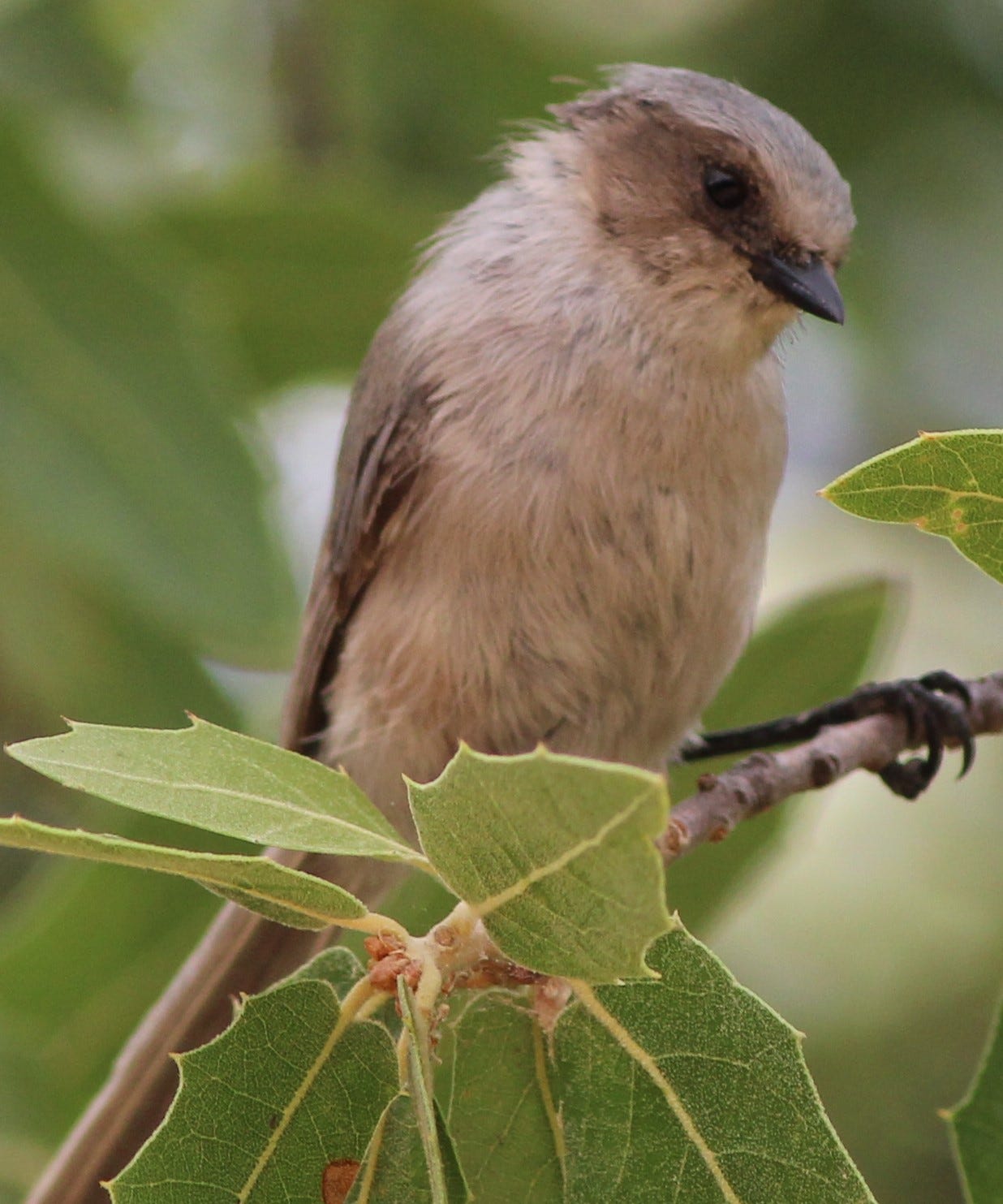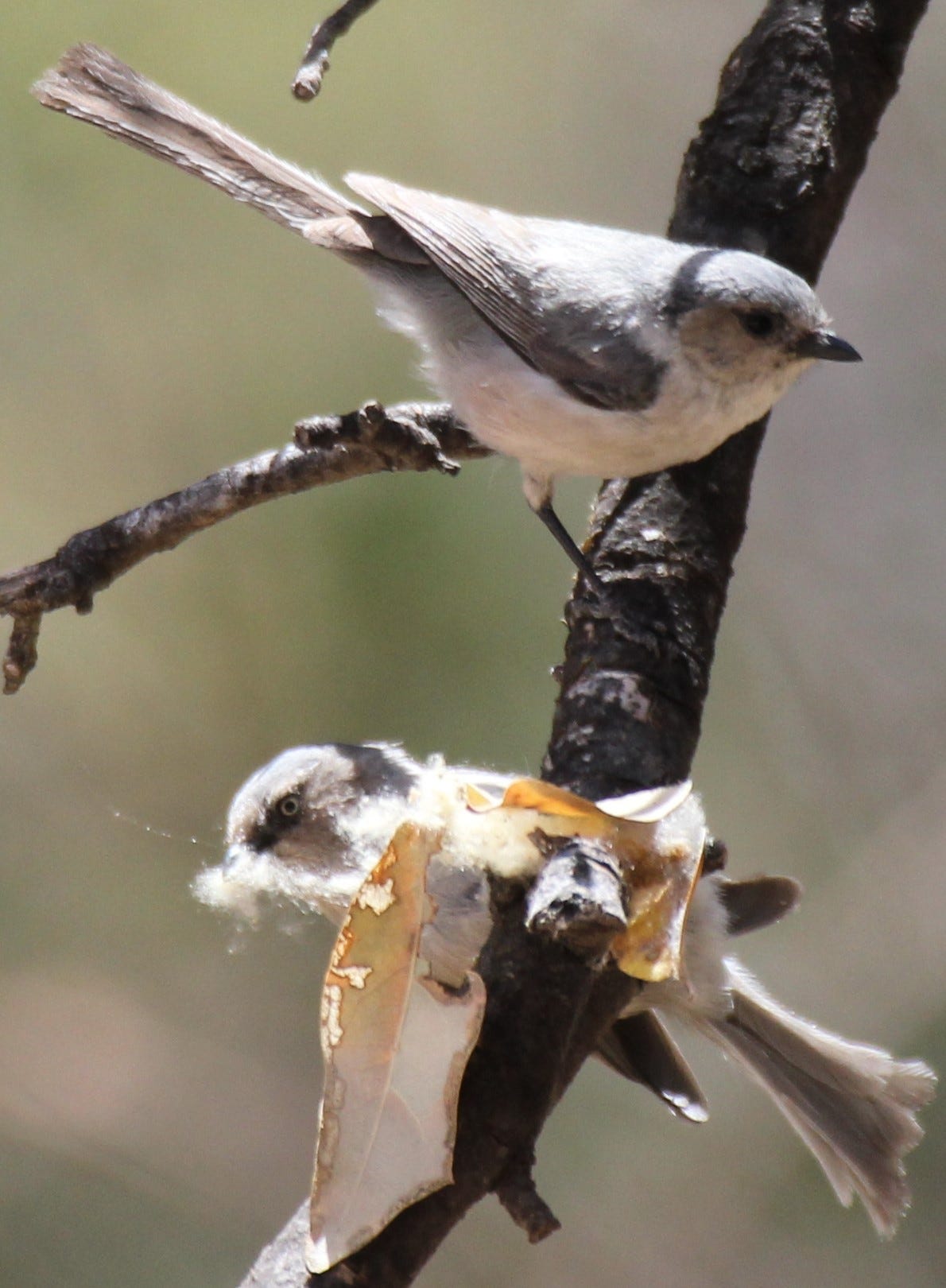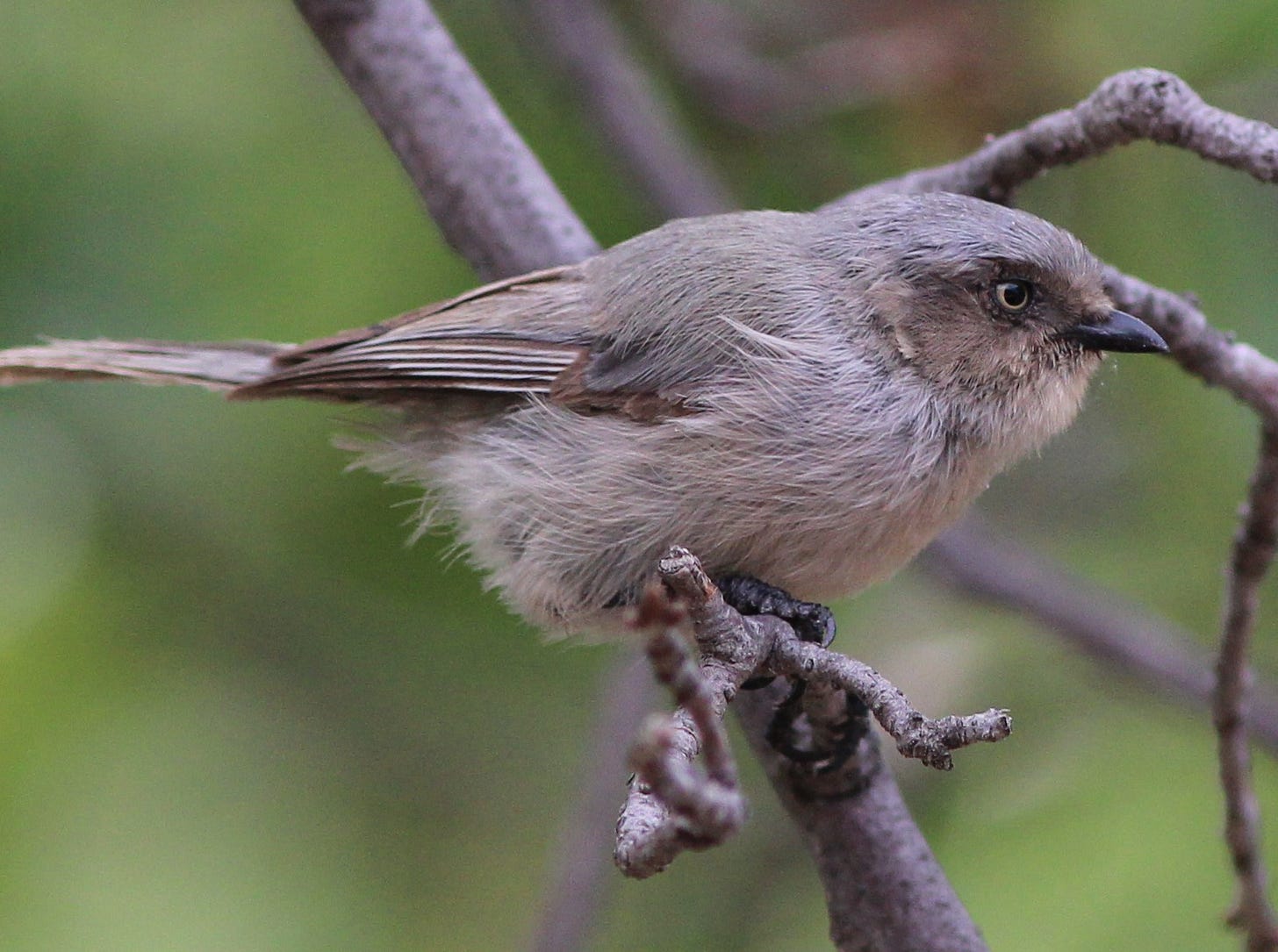January 24, 2024
Bushtits always make me smile.
The lowlands have their darling verdins, those solitary, flighty, yellow-headed acrobats of desert scrub and cactus. But we of the middle elevation oaks and juniper host their equal in size, energy, and cuteness.
Today, they are the first birds of dawn, gray tree-darters the size of walnuts against a bruised sky after two days of slow, misty rain that topped the pond and filled planter saucers to the brim.
Not exactly photogenic in this light. The flock of nine emits a tinkling, buzzing chatter as individuals hang upside down to tease every knot and furrow for mites and aphids. Then, like kindergarteners heading for recess, the tiny birds dip and swoop in single file (making it easy to count them) to the next tree.
I see them only occasionally in the yard, although they are common residents of these woodlands and range year-round across the continental west from British Columbia to Guatemala. They are the only member in the New World of a family (Aegithalidae, the long-tailed tits) that numbers eleven species in the world.
Bushtits weave dangling sock-like nests of grasses and lichen and spiderwebs. Both parents sleep in the nest with other (mostly) adult males, who help attend to the chicks. Bushtits aren’t the only species to practice cooperative breeding, but they were one of the first that researchers documented.
Dr. Sarah Sloane, who began studying the social behavior of bushtits in the Chiricahua Mountains in 1986 and turned it in to a lifelong love, calls the helper birds “supernumeraries.” She banded 607 bushtits and learned that more than a third of nests had two or more helpers. One nest had six helpers.
Sounds like kindergarten to me.
Thanks for subscribing! Bring on the titmice!








I love your descriptives of the size of walnuts and comparing their behavior to kindergarteners. Thank you for making me smile at their cureness.
That’s so cool! I didn’t know anything about bushtits, and I just learned so much!